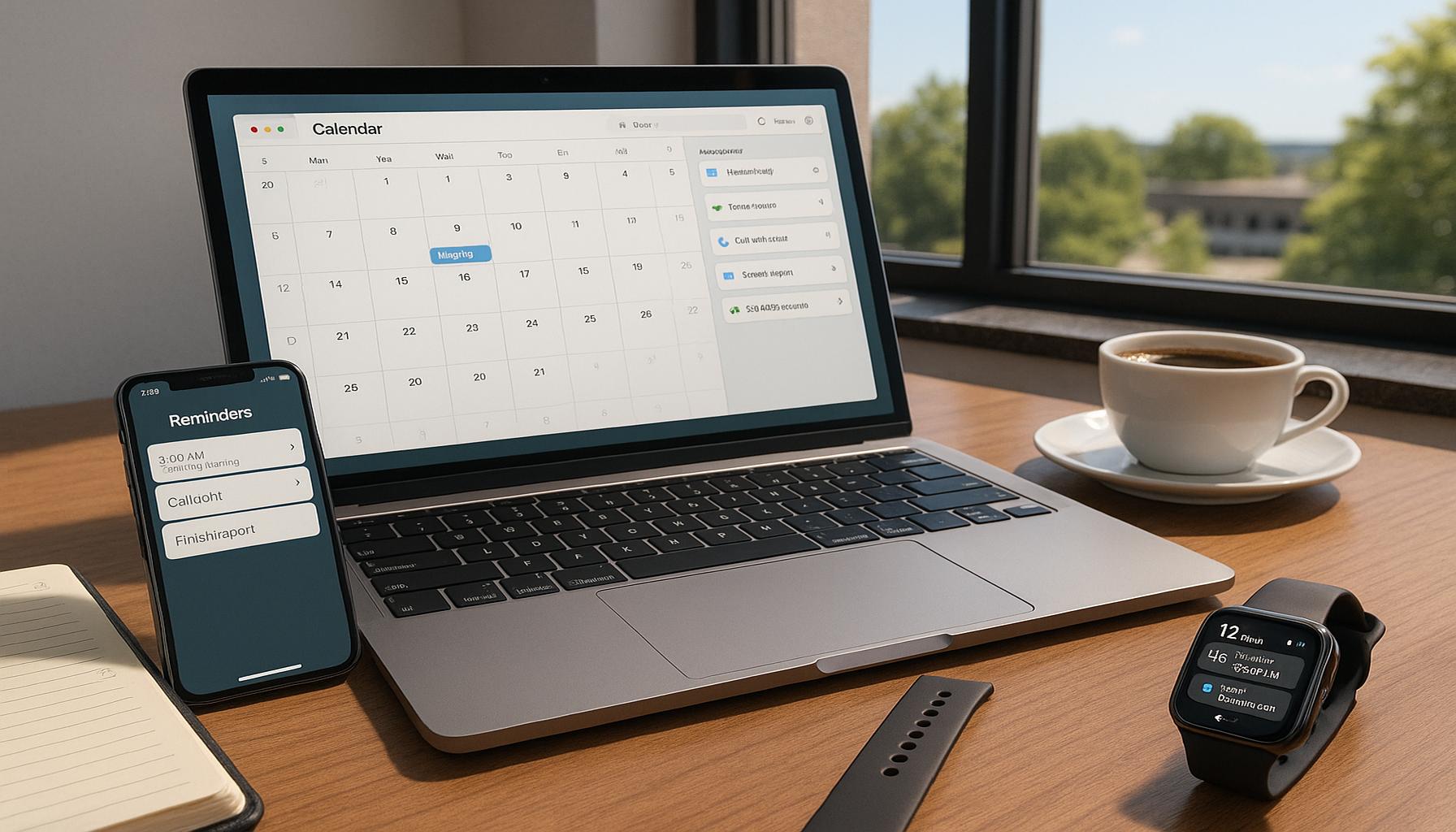The Effectiveness of Digital Tools in Time Management

Harnessing Digital Tools for Enhanced Productivity
In today’s fast-paced world, managing time effectively is more crucial than ever. The proliferation of digital tools has transformed how individuals and organizations approach productivity. Whether you’re a student juggling assignments or a professional managing multiple projects, technology is redefining traditional time management methods. The benefits of digital time management tools extend beyond mere organization; they actually empower users to maximize their potential through streamlined processes.
Digital tools come equipped with various features designed to enhance efficiency. Here are some key categories:
- Task Management: Apps like Todoist and Trello are powerful allies in the battle against procrastination. They help users prioritize tasks, set deadlines, and even break larger projects into manageable steps. For instance, a student can divide a research paper into sections such as outlining, drafting, and revising, enabling them to approach their workload with clarity.
- Calendar Integration: Tools such as Google Calendar provide not just scheduling assistance but also reminders and event coordination. This functionality is especially useful for professionals who manage meetings across different time zones or for families trying to sync multiple schedules. The visual representation of upcoming tasks and events can significantly reduce the mental load associated with planning.
- Time Tracking: Applications like Toggl allow users to monitor how they spend their time, identifying areas for improvement. By logging activities, users can pinpoint tasks that consume disproportionate amounts of their time, leading to strategies that enhance focus and efficiency. For example, a work-from-home professional might discover that they spend too long on emails and can adjust their schedule accordingly.
Research indicates that leveraging these tools can lead to significant improvements in productivity. A 2022 study found that users of digital time management solutions reported a 25% increase in task completion rates. This substantial uptick in productivity highlights the effectiveness of these tools in combating distractions, a common challenge in the digital age where notifications and interruptions abound.
Moreover, the flexibility offered by remote access and mobile capabilities allows users to manage their time effectively from anywhere. Imagine a professional catching up on tasks during their commute or a student reviewing notes while waiting for an appointment. This level of flexibility highlights why digital time management tools are not just beneficial but essential for anyone looking to refine their productivity techniques.
As we delve deeper into the effectiveness of these digital tools, we will uncover how they can cater to various needs and preferences. This exploration will provide insights into their potential to revolutionize your approach to time management, making it an essential topic for those striving for efficiency. By understanding these tools and their applications, you can pave the way for more productive days and less stress, regardless of your profession or lifestyle.

Maximizing Potential with Digital Time Management Tools
The integration of digital tools into our daily routines has not only changed how we work but also how we think about time management. These tools offer an array of functionalities that cater to various needs, ultimately leading to improved productivity and reduced stress. Understanding the effectiveness of these tools involves examining how they can be tailored to different users, from students to executives, and the tangible benefits they provide.
One of the most compelling advantages of digital time management tools is their ability to facilitate collaboration among team members. Tools such as Asana and Monday.com not only help individual users organize their tasks but also enhance teamwork by allowing users to assign responsibilities, share deadlines, and track progress collectively. For instance, a marketing team can coordinate campaign tasks seamlessly, ensuring everyone is aligned and that deadlines are met without confusion. This shared visibility is pivotal in today’s remote work environment, where clear communication is often a challenge.
In addition to collaboration, digital tools empower users to tailor their management techniques. Here are a few specific ways they achieve this:
- Customizable Notifications: Many digital tools offer customizable notification settings, allowing users to receive alerts for tasks and deadlines that matter most to them, thereby minimizing digital noise.
- Integrations with Other Platforms: Programs like Zapier can connect various applications, automating routine tasks and freeing up time for more significant projects. By linking email chains directly to task boards, users can respond promptly without losing track of their progress.
- Analytics and Reporting: Advanced digital tools provide users with data about their time usage patterns, enabling them to optimize their efforts. Users can recognize trends, such as peak productivity times, and can adjust their schedules accordingly.
A study published by the American Psychological Association revealed that individuals using digital time management tools experienced a 30% reduction in reported stress levels, underscoring the mental health benefits that accompany organized work habits. Such tools not only help keep users focused but also grant them the peace of mind that manageable workloads bring. The result is a healthier work-life balance, particularly relevant in today’s society, where burnout rates are alarmingly high.
The effectiveness of digital tools in enhancing time management is further amplified by their innovative features that suit varying lifestyles. For example, a busy parent might rely on a family planner app to keep track of their children’s activities alongside their work commitments. Similarly, freelancers can utilize invoicing and scheduling tools tailored to their clients’ preferences, ensuring that they remain productive while catering to diverse demands.
As we unpack the various dimensions of these digital tools, it becomes clear that they are not mere conveniences but necessities for effective time management. They create an ecosystem where organization meets accessibility, significantly enhancing one’s ability to navigate busy schedules effectively.
Digital tools have revolutionized the way we approach time management, offering an array of features that streamline our daily tasks and enhance productivity. Understanding how these tools function can significantly influence our ability to maximize available time and efficiency. Below is a table that highlights key advantages of digital tools in the realm of time management, intriguing readers to delve deeper into this essential aspect of modern living.
| Category | Advantages |
|---|---|
| Automation | Digital tools can automate repetitive tasks, freeing up valuable time for more complex activities. |
| Flexibility | They offer multi-device access, enabling users to manage tasks anytime and anywhere, increasing overall productivity. |
The introduction of features such as goal-setting, reminders, and analytics empowers individuals to have greater control over their schedules. Moreover, digital tools enable efficient collaboration, significantly reducing the time spent on communication tasks. These advantages illustrate not only the benefits of utilizing such tools but also invite users to explore further how they can transform their personal and professional lives. By integrating the right digital tools into your routine, you can sharpen your focus, enhance your organizational skills, and fundamentally change the way you manage your time.
Enhancing Efficiency through Analytics and Automation
Beyond basic task organization, digital time management tools have evolved with the integration of advanced analytics and automation capabilities. These features significantly increase user efficiency, enabling individuals and teams to manage their time with greater precision. Specifically, these tools employ data-driven insights, allowing users to understand their habits and optimize their workflows based on hard metrics.
For instance, tools like Trello and ClickUp offer insights into project timelines and team workload distribution. By analyzing how time is allocated across tasks, users can identify bottlenecks that hinder productivity. Research from the Harvard Business Review indicated that companies using data analytics in project management witnessed a productivity boost of up to 20%. Leveraging such insights means being armed with the knowledge to make informed decisions about where to devote effort and resources.
Moreover, automation streamlines repetitive tasks that consume valuable time. Platforms like Ifttt (If This Then That) allow users to set up automation rules that trigger specific actions based on certain conditions. For example, if a user receives an email with a project attachment, the email can automatically be organized into a project management tool, saving time that would otherwise be spent on manual entry. Such functionalities demonstrate how automation effectively reduces the margin for error and creates a more seamless workflow.
Another aspect of efficacy in digital time management tools encompasses the mobile accessibility they offer. Many of these platforms have their own mobile applications, enabling users to stay connected and manage their tasks from anywhere. A 2022 survey from Statista revealed that over 50% of U.S. professionals rely on their mobile devices for work-related tasks. The ability to manage tasks and receive updates on the go makes it easier for users to maintain productivity, regardless of their physical location.
Additionally, digital tools can enhance personal accountability. For example, using a time-tracking application like RescueTime or Harvest reinforces a user’s commitment to their schedules and deadlines. These tools help users track their time spent on various activities, providing a comprehensive view of how their time is consumed. Users can identify distractions and minimize them, leading to more focused work sessions and improved productivity outcomes. A study conducted at Stanford University revealed that individuals who actively monitored their productivity habits improved their efficiency by approximately 30%.
Furthermore, specific features like priority setting and goal tracking make digital tools crucial for maintaining a productive mindset. Users can categorize tasks based on urgency or importance and set due dates that align with their long-term objectives. This dynamic allows individuals to align their daily tasks with broader personal or professional goals, tailoring their work approach for maximum efficacy.
As digital tools continuously evolve, their role in time management will only grow more essential. The marriage of analytics, automation, mobile accessibility, and enhanced accountability lays a powerful foundation for managing time effectively. For anyone seeking to streamline their responsibilities, harnessing these digital tools can lead to a significant overhaul in how one approaches not just tasks but overall productivity and time management philosophy.
Conclusion
In the rapidly evolving landscape of work, the significance of digital tools in time management cannot be overstated. As discussed, tools that harness the power of analytics, automation, and mobile accessibility provide users with a competitive edge in managing their tasks efficiently. The ability to analyze productivity patterns and streamline workflows is a game-changer for individuals and teams striving for greater efficacy.
The statistics reveal a compelling narrative; organizations leveraging data-driven insights have experienced productivity boosts of up to 20%, while users who actively monitor their productivity can see improvements as high as 30%. These figures highlight that not only are digital tools enhancing accountability and organization, but they are also fundamentally transforming how professionals in the United States (and beyond) approach their tasks. From prioritizing urgent responsibilities to automating mundane processes, the implications for better work-life balance are profound.
As we embrace an increasingly digital workspace, it becomes imperative to stay informed about the tools available. Whether one is a solo entrepreneur or part of a large corporation, integrating the right time management solutions can revitalize productivity and reframe the way we approach our daily tasks. As such, investing time in discovering and implementing these tools is not just advisable; it is essential for anyone seeking to thrive in a fast-paced environment. The future is agile, adaptable, and digital—taking full advantage of these tools is the key to unlocking potential and achieving goals effectively.
Related posts:
The Role of To-Do List Applications in Improving Time Management
The Role of To-Do List Applications in Improving Time Management
Boost Productivity by Integrating Time Management Systems Effectively
Boost Your Productivity The Impact of Digital Tools on Time Management
The Best Time Management Tools for Remote Teams
How to Integrate Project Management Tools into Daily Routine

Linda Carter is a writer and time management specialist who helps professionals optimize their schedules and maximize productivity. With extensive experience in efficiency techniques and work-life balance strategies, she shares practical time management methods on our platform. Her goal is to empower readers with actionable systems to take control of their time, reduce stress, and achieve both professional and personal goals.